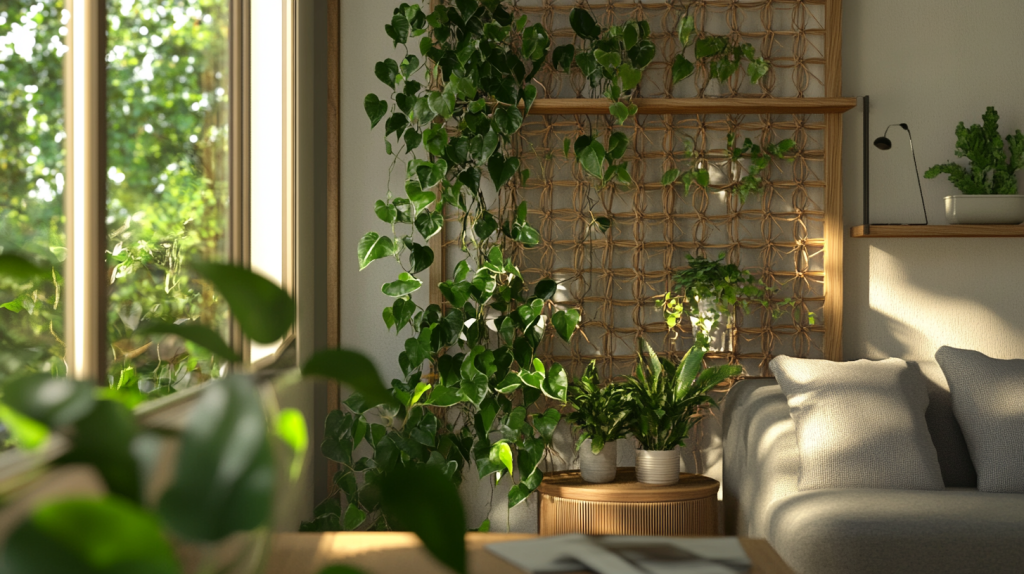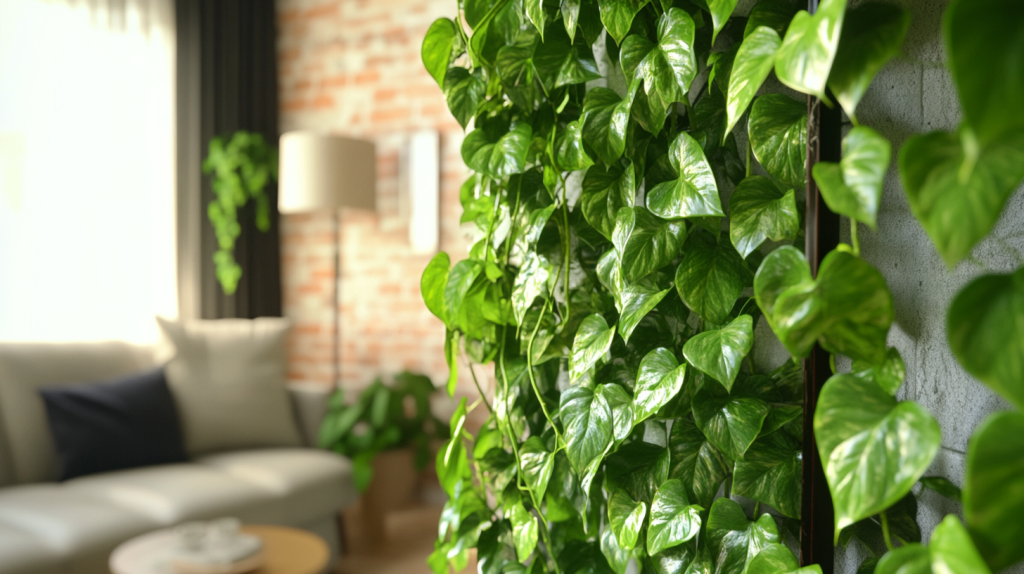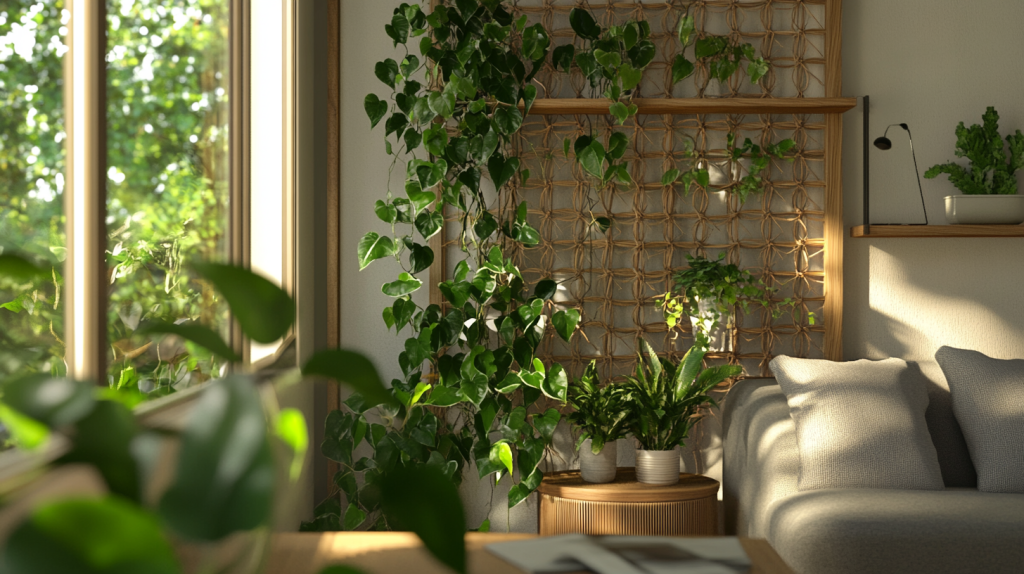Indoor gardening is other than just a fad; it’s a way to build an environment inside your house that’s vibrant, refreshing, and soothing. The climbing and vining plants have gained much popularity for indoor spaces due to their aesthetic appeal in bringing life into a room. These plants, with their usual lush green foliage or colored flowers, turn the bare walls and ceilings into dynamic displays of nature. But to flourish as a plant and give back full bloom, one must go back to the best possible way of care and let it grow with support to become what it is capable of.
The Beauty of Indoor Climbing Plants
Among the most important reasons indoor climbing plants have stolen the spotlight of gardening enthusiasts is that they can create a spot. They add visual interest, especially while making their way up the wall, wrapping around a trellis, or cascading from a shelf. They evoke natural beauty in even the most urban of settings and make a room more inviting and serene.
They come in a variety of indoor climbers, the most popular being the pothos, ivy, and climbing roses. Indoor climbing plants would bring in a touch of nature inside and would be perfect for such places as the living room, kitchen, and office, where they could find their place in planters or woven through decorative supports. With proper care, climbing plants can grow quite vigorously and add to making the home environment greener, purifying the air.

Key Care Tips for Climbing Plants
Care for indoor climbing plants involves a number of pivotal aspects that start with plant selection and address the plant’s light, water, and nutritional needs. Here’s a breakdown of the key steps to follow:
Choosing the Right Climbing Plant
However, when it comes to coming up with a climber for the house, make sure that the climber you will be planting will fit well into your environment. This will be a big key in choosing as each plant is different and knowing the conditions and general growth habits will go a long way to helping. One could really say that some climbers such as pothos are very easy to maintain, can adapt to a wide variety of light issues, ideal for beginners. While some may be easier to grow and adapt than others, like the climbing roses it only needs a bit of attention to bloom inside the house.
Providing Adequate Light
Most climbing plants prefer bright, indirect light when indoors. Sometimes the leaves get scorched by the direct sun, so let it be near windows where filtered light is provided. If your home doesn’t have enough light, supplement with grow lights. Also, make sure to rotate the plant every two weeks to ensure that light is equally distributed on both sides for symmetrical growth.
Proper Watering and Humidity
Indoor climbing plants generally like a lot of humidity and well-drained soil. Overwatering and underwatering can both cause your plant to rot or dry out. A trick one can do is adding water when the top 1-2 inches of the soil have dried down. One should water thoroughly, allowing excess water to drain out of the pot to prevent the rooting wood from decaying due to excess water.
Nutrient Management
Fertilizing your climbing plants every 4-6 weeks of the growing season encourages healthy growth; this would be in spring and summer. A balanced, water-soluble fertilizer is a good choice since it ensures the plant gets the right mix of nutrients. During the fall and winter, most plants enter a dormant phase and thus require less fertilizer.
The Importance of Structural Support
While climbing plants grow, their growth develops their natural need for support for growing upwards and standing upright. If this support is not available, it leads to a probable entanglement, sprawling over the floor, and inability of plants to attain the fullest growth. Support ensures good plant guidance during its growth and prevents the possible health decay resulting from damage to the plant stems and leaves.
Here, it becomes very necessary to use the Climbing plant support system, which provides the plants to grow in order and gives more functional and decorative appeal. With the proper support system, your indoor garden will not only become more attractive but will create a beautiful, eye-catching view of that room.
The trellis is a wonderful aid in the growth of plants upwardly, in an organized manner and with an attractive feature. These come in all forms of style and materials-from a simple wooden frame to a bit more elaborate ones featuring some nice ironwork. By pinning the plant against the trellis while it grows, you may achieve beautiful patterns and shapes that complement your space’s décor.
This also helps the plant have healthy, strong stems and leaves, important not only for the longevity of the plant but also its overall health. The trellis will also facilitate even light exposure and air circulation around the plant, which can help avoid mildew and mold issues that often come about from overcrowded, poorly supported plants.

Additional Tips for Thriving Climbing Plants
In addition to giving them adequate support, here are a few more tips you can follow to make sure your indoor climbing plants are happy.
Pruning for Shape and Health
Pruning, besides being necessary for aesthetic appeal, is also healthier for the climbing plants. Regular pruning of dead or damaged stems will, in turn, promote new growth and keep an orderly shape. If the plant starts growing out of the support or becomes too bushy, excess vines should be trimmed down to encourage more compact growth. Pruning also allows one to redirect the plant’s energies to the healthier parts of the plant.
Rotating Plants for Even Growth
Most climbing plants often grow towards the light. For this reason, pot rotation should be done every other week. This will make sure that all sides of the plant will equally get the right amount of light, thus making it grow more evenly. If not rotated, it may grow heavily on one side or unevenly, which would look very unappealing.
Choosing the Right Support for the Plant’s Growth Pattern
All climbing plants are not precisely similar in their growth pattern and therefore, the selection of support structure is critical. Ivy, for instance, trails and spirals clockwise all around any objects that are available while climbing roses use green tendrils or thorns to hold onto objects in their path. Select the kind of a trellis or support structure suitable to the growth pattern of the particular plant.
Wrapping Up
Indoor climbing plants bring in a lot of beauty and health benefits to a home. By following all the care tips above, from choosing the right plant to giving them the required light, water, and nutrients, you’ll be well on your way to having indoor climbing plants that will thrive in no time. Add the proper support system, like a Plant Trellis, to help them grow not only structured but also well-looking. That will just give them the needed support for proper growth and add to the beauty of your space. With these few tips, you should get your indoor climbing plants to literal and figurative new heights.
